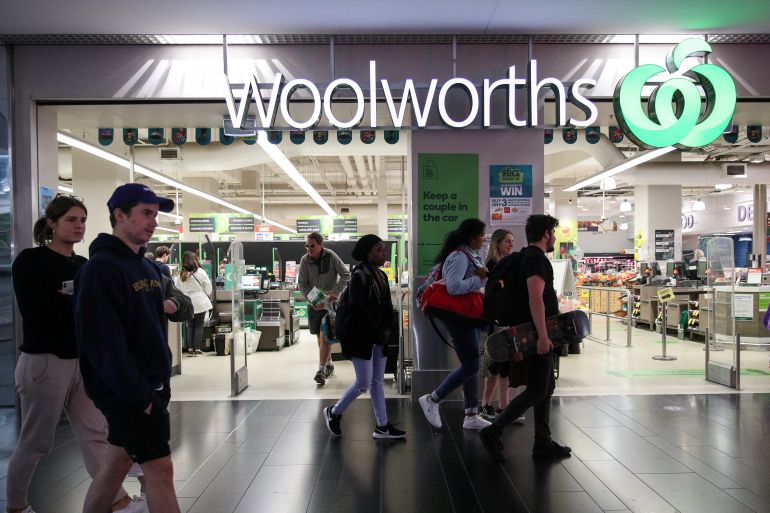Australia economy grows 3.6% annually on spending, exports
Strong economic results come as inflation is running at a 21-year high of 6.1 percent.

Australia’s economy picked up speed in the June quarter as consumers kept spending and energy exports boomed, offering hope activity can weather sharply higher interest rates and cost-of-living pressures.
Data from the Australian Bureau of Statistics on Wednesday showed gross domestic product (GDP) rose 0.9 percent in the second quarter, in line with forecasts and up on the first quarter’s 0.7 percent rise.
Keep reading
list of 4 itemsHeatwave pushes California’s energy grid to its limits
Chile’s Boric reshuffles cabinet after new constitution rejected
Seized Trump documents showed foreign nation’s nuclear capability
Annual growth accelerated to 3.6 percent as the lowest unemployment rate in almost five decades underpinned household incomes and spending.
Indeed, so resilient was the economy that the Reserve Bank of Australia (RBA) has had to embark on an uber-aggressive tightening campaign to try to cool activity and restrain runaway inflation.
The central bank on Tuesday raised its cash rate 50 basis points to a seven-year high of 2.35 percent, bringing the total tightening since May to an eye-watering 225 basis points.
Markets are leaning towards another half-point hike in October, and for rates to reach as high as 3.85 percent given inflation is running at a 21-year peak of 6.1 percent and likely to top 7 percent by Christmas.
Inflation was widespread in the GDP report, with its main price index jumping 6.9 percent for the year, the fastest pace since 1988/89.
Compensation of employees, a proxy for wages, boasted the biggest gain since 2010 as firms were forced to pay to attract and retain staff amid an unemployment rate of just 3.4 percent.
Consumers, however, were still not cowed and household spending added a meaty 1.1 percentage points to growth in the quarter. Australians have the means to keep shopping as the savings ratio dipped to 8.7 percent, still well above pre-pandemic levels.
“Households increased spending on domestic and international travel as COVID restrictions further eased and international borders remained open,” said Sean Crick, head of National Accounts at the ABS.
“While spending on transport grew strongly, households were still only spending two-thirds of what they did pre-pandemic.”
Australia’s miners were also flush with cash as a global scramble for energy boosted prices for coal and gas. Coal alone brought in more than 100 billion Australian dollars ($67bn) in the year to June, helping exports contribute 1.1 percentage points to Q2 GDP.
All these dollars showed up in nominal GDP, which surged 4.3 percent in the quarter and a blistering 12.1 percent for the year, taking output to a record 2.3 trillion Australian dollars ($1.54 trillion).